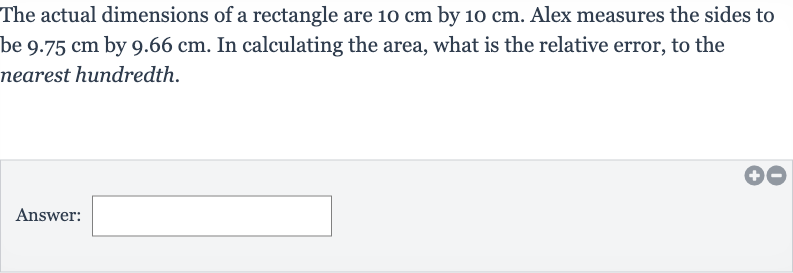Full solution
Q. The actual dimensions of a rectangle are by . Alex measures the sides to be by . In calculating the area, what is the relative error, to the nearest hundredth.Answer:
- Calculate actual area: First, calculate the actual area of the rectangle using the actual dimensions.Actual area = Actual area = Actual area =
- Calculate measured area: Next, calculate the measured area of the rectangle using the measured dimensions.Measured area = measured length measured widthMeasured area = Measured area =
- Find absolute error: Now, find the absolute error by subtracting the measured area from the actual area.Absolute error = Absolute error = Absolute error =
- Find relative error: To find the relative error, divide the absolute error by the actual area and then multiply by to get the percentage.Relative error = Relative error = Relative error =
- Round relative error: Finally, round the relative error to the nearest hundredth.Relative error (rounded) =
More problems from Percent error: word problems
QuestionGet tutor help
QuestionGet tutor help
QuestionGet tutor help
QuestionGet tutor help
QuestionGet tutor help

